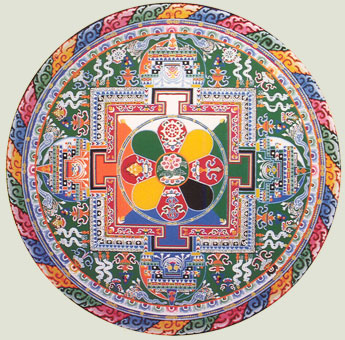Absence / Makeup assignment
- This topic has 3 replies, 2 voices, and was last updated 16 years, 11 months ago by
Anonymous.
-
AuthorPosts
-
October 7, 2008 at 6:36 am #5194
Rob_Hugo@PortNW
KeymasterIf you miss a session, you will need to make it up by completing a homework assignment:
1. Attend an event (lecture/meeting/discussion panel, etc.) that focuses on issues related to East Asia or visit a museum exhibition or performance relating to East Asia.
2. Submit a 150-200 word summary of what you learned and post it in this forum as a new thread.
October 20, 2008 at 8:28 am #29879Anonymous
GuestI was very disappointed to miss the Tuesday, Oct. 14, session on Japanese literature due to a truly awful cold, no doubt passed to me by one of my 14-year-old germ factories. But, when a door closes, a window opens!
My school was fortunate enough to have the Venerable Tenzin Yignyen visit us last week to teach us about Buddhist traditions and to construct a traditional Buddhist sand mandala. Tenzin was born in Tibet, but escaped with his parents to India after China's occcupation of his homeland. At the age of 16, Tenzin joined a monastery, which specialized in the construction of sand mandalas. When he's not travelling, Tenzin teaches at Buddhism at Hobart College.
Tenzin's mandala was about three feet square and meticulously constructed of sand--you can see it at http://www.campbellhall.org. Another of Tenzin's mandalas is shown on is website:
When the mandala was complete, Tenzin destroyed it, as is traditional, representing the impermanence of things and the importance of detachment.
During his visit, Tenzin gave a lecture on Buddhist ideology, focusing on the importance of tolerance, caring about others, avoiding selfishness, and avoiding materialism and waste.
January 24, 2009 at 7:07 am #29880Anonymous
GuestI traveled to the bonsai tree exhibit at the San Diego Wild Animal Park. My first experience with bonsai, besides watching Karate Kid II, was a fascinating one. I had not idea the dedication it took to create bonsai. Many of the trees on display were actually junipers and maples, yet they were cultivated in such a way that they grew to only a fraction of their potential size. The techniques of pruning and wiring were employed to stunt tree growth. Through design and painstaking work, the bonsai artists (and they are truly artists) created many varied versions of bonsai trees. The formal upright style just looked like shrunken trees and the literati style gave the trees unnatural twisting shapes. My favorite style was the cascade style, which is meant to imitate trees growing over water and cliffs. The apex of the tree would appear below the pot, and the “pots” in bonsai are often more like trays. The bonsai garden was beautiful and had a claming effect on me. I couldn’t help but think of traveling to Florence and seeing Michelangelo’s sculptures emerging from the marble. It is amazing how these two forms of art are in harmony with the lines of nature, creating a truly inspiring sight to behold.
January 24, 2009 at 7:07 am #29881Anonymous
GuestI visited the Pacific Asia Museum in Pasadena. I highly recommend taking a few hours out of your weekend to see this little gem of a museum. It was not very crowded when I went and you really felt a sense of calm and tranquility, especially in the Chinese Garden. The Chinese garden combines nature - beautiful plants, pools and stones – with human sculpture and architecture. The balance of the different elements reminded me of the Taoist poetry, in which a unity is described through all things. The koi pond offered an excellent spot to reflect, and I think this would be a great place to take a small group of students to talk about the different schools of Asian philosophy (Taoism, Confucianism, Buddhism). Exhibits are rotating at this museum, so you can never be quite sure what you will discover when you arrive with a group of students unless you do your homework ahead of time, but the art is not limited to China and Japan. There was a great exhibit called “Visions of Enlightenment – The Art of the Buddha” which explore the different projections of reality in Buddhist art. I especially like this because you can compare and contrast art from India, Tibet and even Korea all linked by the same tradition. I highly recommend visiting this museum and considering taking a group of students. They have great ideas for lesson plans for you as well.
-
AuthorPosts
- You must be logged in to reply to this topic.



